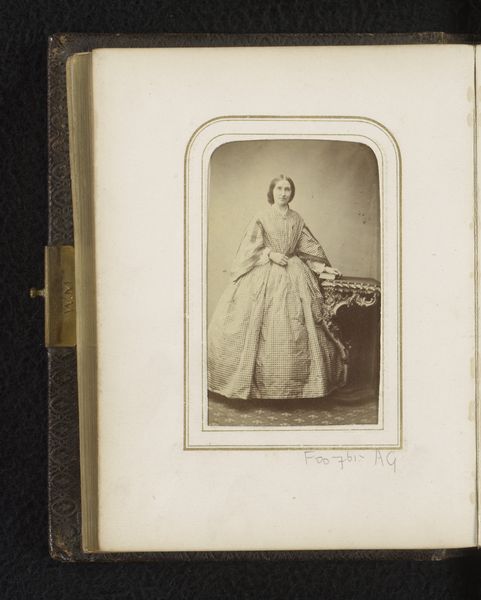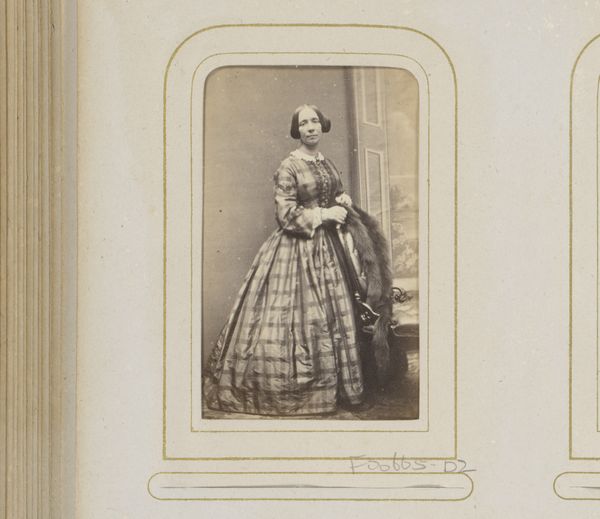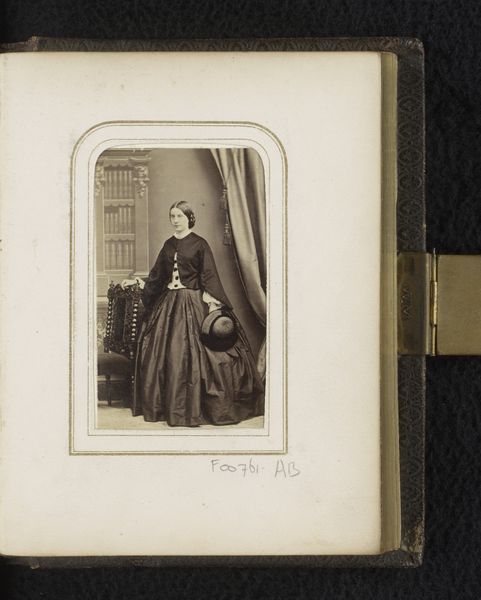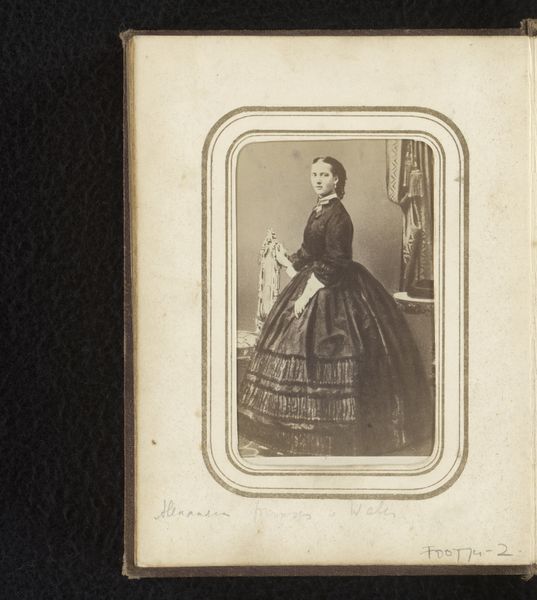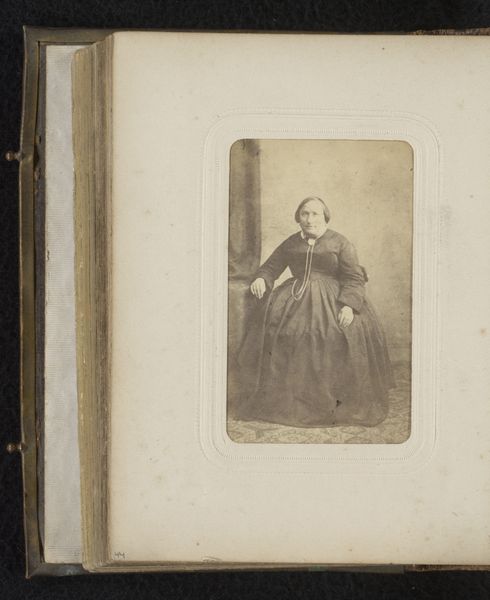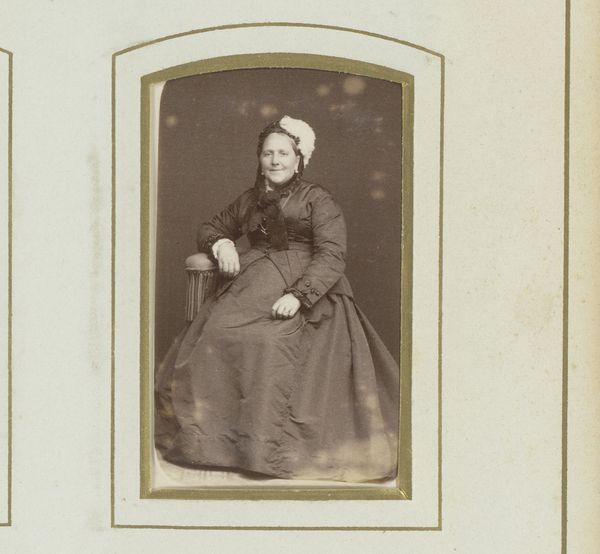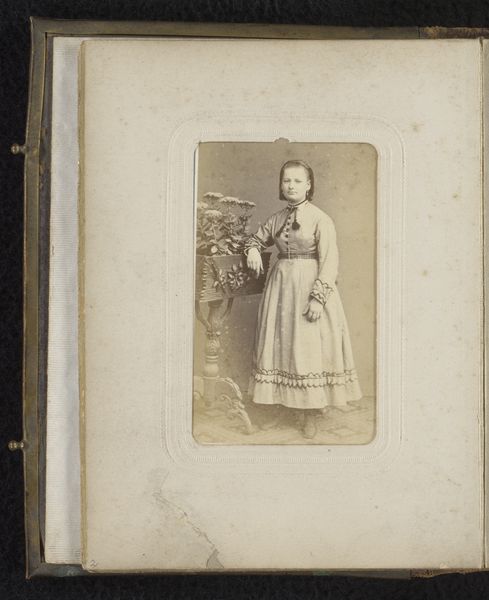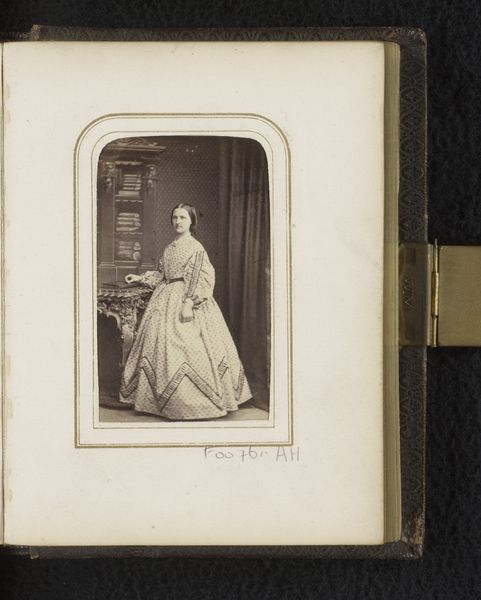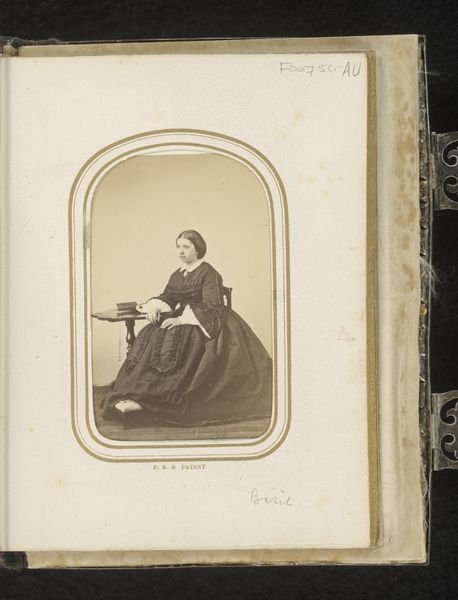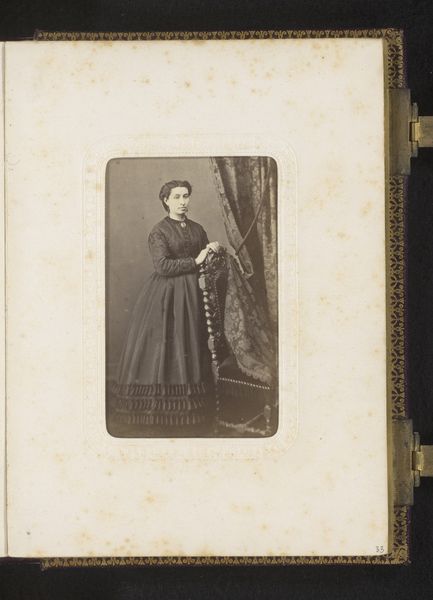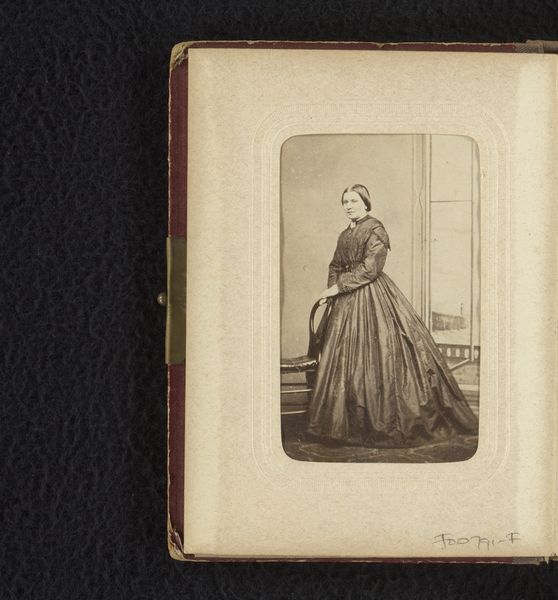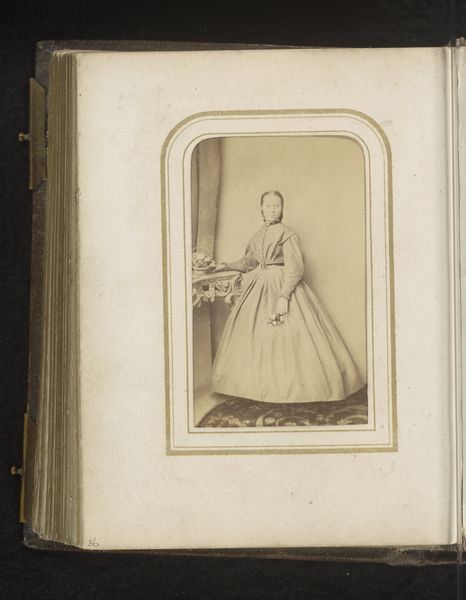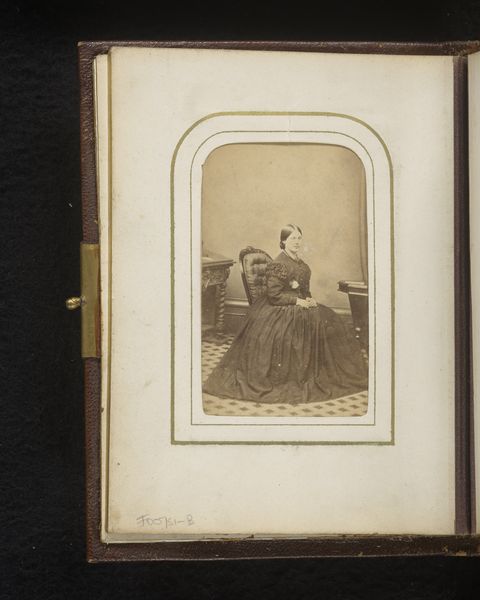
photography
#
portrait
#
photography
#
realism
Dimensions: height 87 mm, width 51 mm
Copyright: Rijks Museum: Open Domain
Editor: So, here we have "Portret van een staande vrouw," dating roughly between 1855 and 1878, by Henry Lock, created using photography. The woman's dark, flowing dress is the first thing I noticed; its materiality dominates the image. What stands out to you when you examine the piece? Curator: What strikes me is precisely that dress, and the labor embedded within it. Think about the textiles, the dyeing processes, the construction. Dark colors like this, while seemingly simple now, involved complex chemical processes during that period. How does the photographic process itself – the collodion process perhaps – interact with these materials? Editor: That's a fascinating point. I hadn’t considered the chemical aspect of the dress dye. The photographic process feels distinct from painting somehow. Almost as if the dress material made itself into art. Curator: Precisely! It is about understanding photography not just as representation, but as a physical process deeply intertwined with other industries and labor practices. How do you think this relates to class and social status within the image? The sitter can afford a portrait sitting and is displaying her materiality in line with accepted norms. Editor: So it is about making assumptions based on clothing? Are we at risk of idealizing history and assigning traits to people without necessarily acknowledging nuance? It feels somewhat superficial. Curator: But that superficiality itself speaks volumes! The performance of status through materials is rarely neutral. Can you think about alternative readings that explore these tensions, focusing on the agency that portrait-sitters exerted in the composition of these images? Editor: Okay, I see. By focusing on the materials and labor, we get a glimpse into a much broader social and economic landscape. It enriches the photograph! Curator: Indeed! Now when you look at a portrait, will you think differently about the social context, material production and lived experience of these times? Editor: Absolutely. It moves the image from a flat portrait to something deeply three dimensional!
Comments
No comments
Be the first to comment and join the conversation on the ultimate creative platform.
